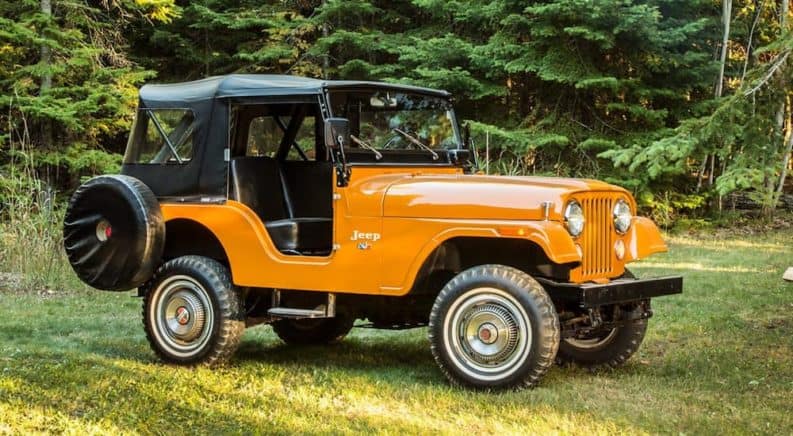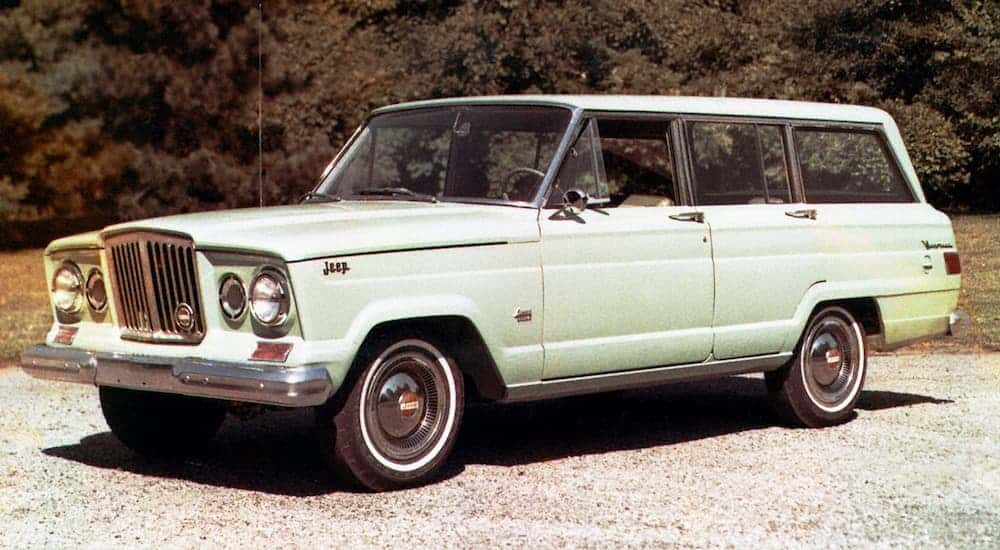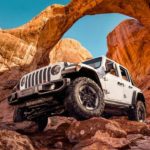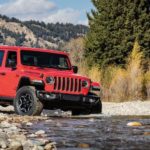Did you know that Jeep has been a fixture of the American automobile industry for 80 years now? Over those eight decades, Jeep has made a name for itself as the builder of some of the most capable off-road machines on the planet – as well as luxury vehicles, performance SUVs, and the occasional pickup truck. Before joining in the festivities at a Jeep dealership near you, let’s take a moment to look back on the humble beginnings of this great brand and its winding journey to its current iconic position.
Once Upon a Time
Around the start of World War II, before the United States was even formally involved, the Army went looking for a new vehicle to help it in battle. Up until that point, war was primarily waged with literal horse power, but the German blitzkrieg of France had demonstrated that horse-drawn wagons and mounted cavalry soldiers urgently needed to be replaced with something more modern. As part of the Army’s rapid motorization, on June 22, 1940, a set of requirements for a light scout car was sent to 135 automakers. Only three rose to the challenge – Bantam, Ford, and Willys. The three battled it out, and eventually, the Willys model became the base for the final design.
The Willy-Overland MB (as it was officially known) quickly became an integral part of the Allied forces in WWII. According to the famous war correspondent Ernie Pyle, “It did everything. It went everywhere. Was as faithful as a dog, as strong as a mule, and as agile as a goat. It constantly carried twice what it was designed for and still kept going.” On top of its original intended role in reconnaissance, the Willys MB saw use moving special forces behind enemy lines, transporting wounded to hospitals, towing light artillery pieces, and every other duty imaginable.
But where did the Jeep name come from? There are multiple theories but no definitive answer. For one thing, “jeep” was WWI slang for “trivial” or “mindless” or, often, “new recruit,” and the MB was, well, a new recruit. Another theory points out that “Eugene the Jeep” was a magical creature from another dimension who showed up in Popeye comics in 1936. Eugene could only say one word, “jeep,” and he was known for teleportation, so it’s thought perhaps that when the MB showed up and could drive into difficult terrain, Eugene’s ubiquitous catchphrase inspired the nickname. Finally, one of the most popular theories is that “jeep” was short for “GP,” or “general purpose.” However, GPW was also the designation for the thousands of Jeeps that were license-built by Ford during the war. Most likely, it’s a mix of all these theories, and in 1950, “Jeep” was officially trademarked by Willys-Overland.
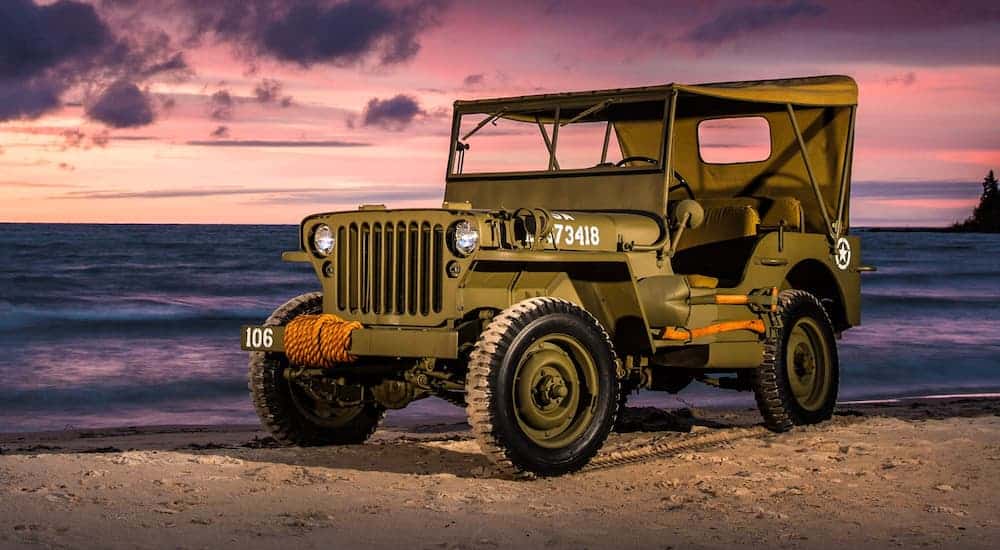
Honorably Discharged
After the war, it was clear the Willys MB had many uses that could translate to non-battle situations. With a few tweaks, the CJ, or “Civilian Jeep” was introduced to the civilian market. The CJ was marketed as “The All-Around Farm Work-Horse” and could be used as a farm truck or tractor or even to take the place of two draft horses. Eventually, more comfortable seats and better struts were added for comfort on the road.
In 1946, the Jeep base was transformed into the Willys Wagon – the first all-steel station wagon. With a paint job mimicking Woodies yet without the peeling and cracking of wood sides, Willys Wagon could haul materials and the family. A Jeep brand truck first hit the road the next year, 1947, followed in 1948 by the Jeepster convertible.
Further proving its functionality, the Jeep chassis was even integrated into Zamboni’s ice resurfacing machines from 1949 – 1964. And from 1959 – 1964, you could even get a “Surrey Gala” with a striped interior and fringe top in either Tropical Rose and Coral Mist, Jade Tint Green and Glacier White, or Cerulean Blue and Glacier White: basically, the super-powered golf cart of your Dirty Dancing dreams.
By 1955, after a few more CJ iterations, Jeep was known as the world’s largest maker of four-wheel-drive vehicles. Besides being popular with civilian consumers, Jeep never forgot its military roots. For the Marine Corps, Jeep created the CJV-35/U with water-fording capabilities, and the upgraded M38 Jeep served during the Korean War (you can find it in most episodes of M*A*S*H). The larger M170 variant was used as a field ambulance and for other roles where more passenger and cargo space was needed.
The Next Generation(s)
In 1962, the Jeep Wagoneer became the first of what we now know as SUVs – especially when the Super Wagoneer appeared three years later. Still a 4×4, it had all the comfort of a passenger car, including an automatic transmission. The Wagoneer boasted a host of features never before seen and still has a loyal following to this day. Besides the Wagoneer, the 1960s also brought several Jeep trucks, including the original Gladiator. The name was taken out of commission in 1971, but a new Gladiator has recently brought the name roaring back to life.
As the years rolled on, so did a variety of Jeeps. One particular model, the Commando, was a variety of Jeeps in itself with its trim options of a roadster, convertible, station wagon, and truck. The seventh version of the original civilian jeep arrived in 1976, featuring the CJ’s first major redesign in two decades. The CJ-7 had an optional Golden Eagle trim package from 1977 – 1983. The most famous Golden Eagle, perhaps, was called Dixie and was driven by Daisy on The Dukes of Hazzard.
Wagoneers, CJs, and Jeep trucks continued to evolve into the 1980s, but the biggest addition to the family came from downsizing. The oil crisis of 1979 directly led to the creation of a smaller 4×4 named the Cherokee. Debuting in 1984, the new XJ Cherokee was significantly smaller than the luxury Wagoneer and was the first modern crossover SUV. Unsurprisingly, it won all of that year’s market segment awards. A more luxurious version, the Grand Cherokee, debuted a few years later, although the two vehicles have since diverged and now ride on very different platforms.
And Here We Are
Over the past three decades, the Jeep lineup morphed into the Grand Cherokee, Cherokee, Compass, Renegade, Wrangler, and Gladiator we see today. The Compass was introduced for 2007 to break into the smaller crossover market, and 2020 brought a reintroduction of the Gladiator name. Unlike a traditional midsize pickup, the new Gladiator has all the power and off-roading capabilities you would expect from a Jeep. In addition to carrying Jeep’s Trail Rated badge, the Gladiator is also Desert Rated, making it the first Jeep able to officially withstand the heat, sand, and unpredictability of driving in a desert (although given the exploits of the Desert Rats and their jeeps back during World War II, this badge seems a little overdue).
To celebrate its eighth decade, Jeep has proven that you can teach an old dog new tricks with the brand new Wrangler 4xe and its plug-in electric powertrain. It can even drive 25 miles on electricity alone, meaning you can have a top-down, wind-in-your-hair experience without any motor noise to keep you from communing with nature. But don’t worry – the 4xe has plenty of power to live up to the Wrangler name, and the battery pack is securely packed and waterproofed so you can hit the trail and ford streams just like you would in any other Wrangler.
Jeep is celebrating its 80th birthday and its long history of both power and comfort. With such variety in the family of Jeeps for the 2021 model year, you’re sure to find one to fit your lifestyle. A Jeep dealership near you is waiting for the chance to show off all that’s tested, true, and brand-new.

